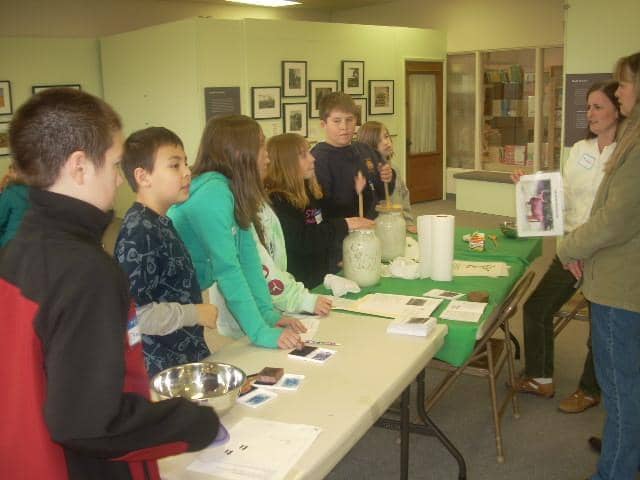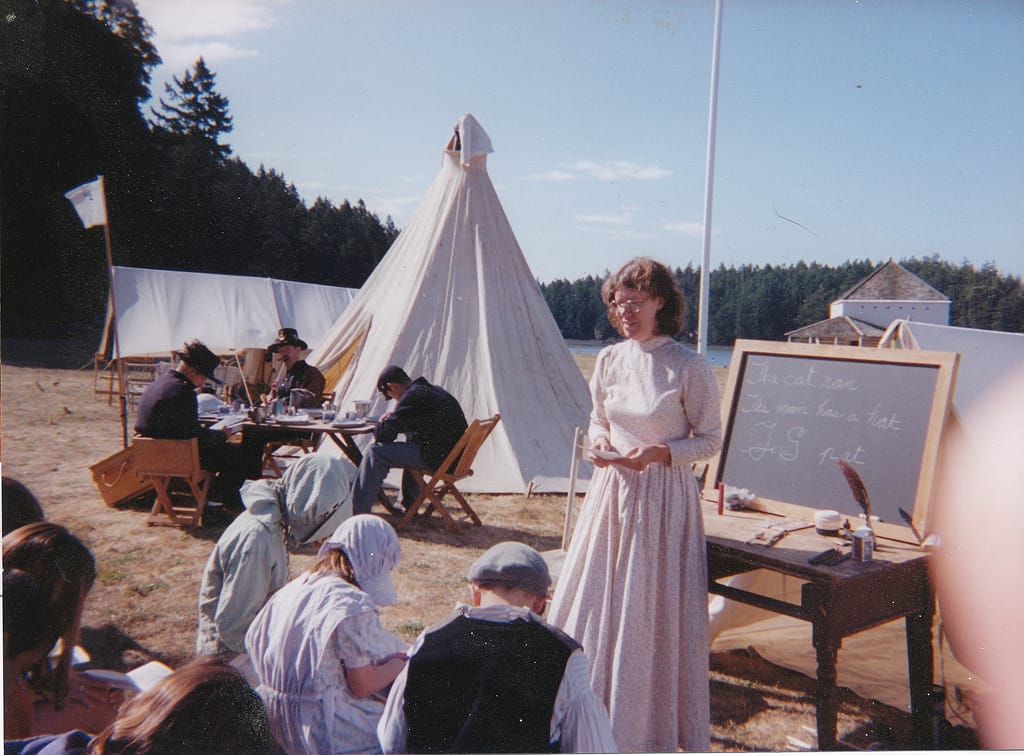I have always loved history since I was a girl. I grew up on pioneer tales from the family going West, a great-grandfather who was a surgeon at the Battle of Gettysburg, another great-grandfather an amateur geologist in the Hayden Expedition that scientifically explored Yellowstone for the first time and many tales of my courageous great-grandmother, Bongie and Nana, her daughter, in the late 1800s. I am so lucky.
It was easy to pursue a history degree in college and later fall into museum work at Mission Houses in Honolulu and museums in the Pacific NW. I wrote historic stories as a girl and today, I write historical fiction for adults. History: A wonderful, fulfilling pursuit I’ll never let go. Most of all, I have enjoyed some 36 years teaching history hands-on to students from elementary school through college.
A good deal of that time was with Allied Arts of Whatcom County in their outreach programs in the classroom. Today, I told them that I was retiring.
In the beginning
My first exposure to teaching history to kids was when I was a guide at Mission Houses in the 1970s. I had just been hired as a guide and spent a week following an experienced guide around to learn its history. The wood-framed house came all the way from Connecticut in 1821 as a pre-fab and was set up on a coral lined basement, the first of its kind in Hawaii. Honolulu in the 1820s was vastly different from what it is today, but how do you convoy history in a meaningful way to young students? When no one wanted to work with a group of second graders coming to the site, I said I would. It was challenging telling the story of the house, but when a student asked “Where’s the TV?” I knew that the way to explain history was to experience it hands-on.

When my family and I moved to the Mainland, I looked for a place to work with students in the local classrooms. The Whatcom Museum was training docents to go into the classroom to teach 4th grade art and a hands-on activity workshop on Coast Salish Indians. I signed up for both. When I was asked to demonstrate spinning and weaving in my oldest son’s classroom, I created my own hands-on program involving training parents to man the various stations. I soon got involved with continuing ed at my local university teaching historic activities that would compliment their social studies programs. But most of all, it was creating hands-on workshops in the schools that drew me to Allied Arts.
Pioneers in the Classroom
I don’t think anything has given me such joy as exploring early settlers in my neck of the woods, but making sure that the students understood that there were people already here. There were place names and culture. As my audience was most often 3rd graders, I tried to give them a rounded picture. Yet, teaching them how to make proper butter, spin and card wool, play games, and experience 19th schooling hands-on , was the focus of the activities. Dressing up, too.



Over the years, I created social studies curricula and hands-on history workshops for several school districts, a pioneer museum, and for my own years as a museum educator at a county museum. I’ve taught colonial life to an entire 5th grade at an elementary school in Seattle for 19 years and was a 1860s schoolmarm at English Camp at the national park for 22 years. I’ll continue going to English Camp as Miss Libby , but I’ll no longer be lugging crates and materials to schools.
Good Times and wonderful memories.

Janet, you’re an inspiration! After missing our third grade visits for two years (COVID), the Granite Falls museum hosted our local 3rd, 4th, and 5th grade classes over a period of two weeks. What an adventure!